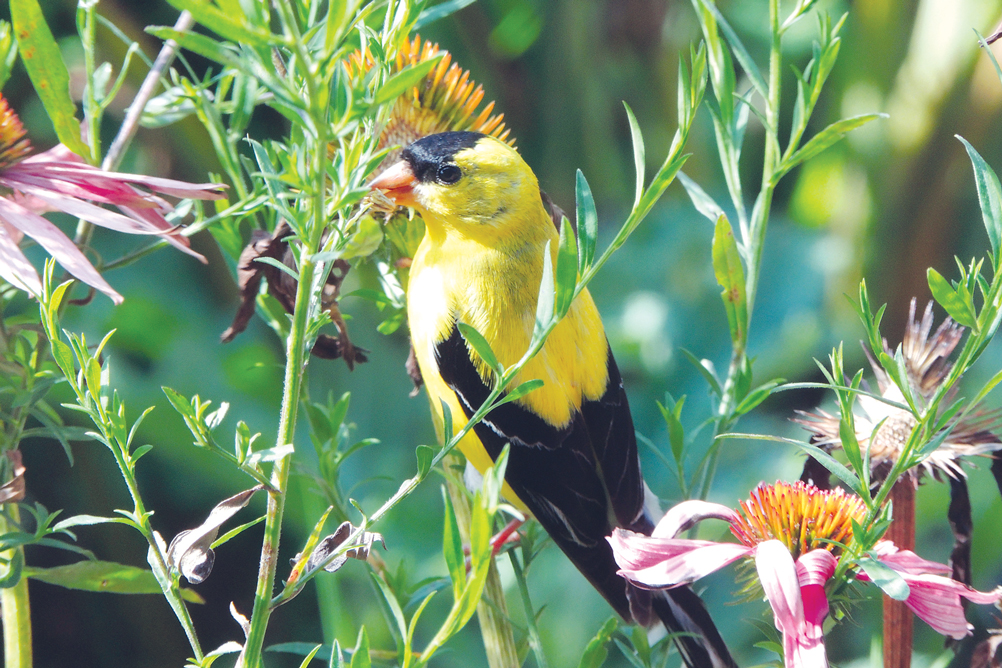Unique coloring makes this perky bird easy to spot American goldfinch

By Theresa Semchee
Ohio certified volunteer naturalist
This perky lemon-yellow bird is easy to spot because of their unique coloring.
Adult males in spring and early summer are bright yellow with a black forehead, black wings with white markings and white patches both above and beneath the tail.
Adult females are duller yellow beneath, olive above.
Winter birds are drab, unstreaked brown, with blackish wings and two pale wingbars.
Both male and female measure 4.5 to 5 inches in length, weigh 0.4 to 0.7 ounces and have a wingspan of 7.5 to 8.5 inches.
Goldfinches often are residents throughout the year, but vacate extreme northern latitudes to avoid the most severe weather.
When they do stay, they have a variety of adaptations to help them survive.
For example, they fill their crops late in the day for a supply of seed to digest at night.
They choose the most protected shelters for roosting, often deep in a patch of conifers or in tunnels under snow.
Their greenish winter plumage has better insulating qualities than their summer plumage.
The goldfinch’s main habitats are weedy fields, floodplains and overgrown areas, particularly where plants such as thistles, sunflower and asters are common for their food and some shrubs and trees are available for nesting.
They also are found in cultivated areas, roadsides, orchards and backyards.
American goldfinches can be found at feeders any time of year, but most abundantly during winter here in the Mahoning Valley.
Males and females move together to choose a suitable nesting site.
The female builds the nest, usually in a shrub or sapling in a fairly open setting rather then in deep forest.
The nest is often built high in a shrub where two or three vertical branches join: usually shaded by clusters of leaves or needles from above, but visible from below.
The nest is an open cup of rootlets and plant fibers, lined with plant down, and often woven so tightly that it can hold water.
It takes the female about 6 days to complete the nest. It is usually 3 inches across on the outside and 2 to 4 inches high.
The female incubates the eggs, sitting on them 95 percent of the time.
The average clutch size is two to seven eggs, and the number of broods is one to two.
The eggs are pale bluish white and sometimes have small, faint brown spots around the large end.
The incubation period is 12 to 14 days. During that time, the female relies on the male to feed her.
The nesting period is 11 to 17 days.
These are active and acrobatic birds, sometimes clinging to weeds and seed socks.
You will see them in large numbers at feeders and on the ground around them.
Almost any kind of feeder may attract the goldfinches, including hopper, platform and hanging ones.
They prefer sunflower seeds and nyjer.
Goldfinches are usually easy to find throughout much of North America, except in deep forest.
Their flight call, which some characterize as sounding like a “potato chip,” draws attention to them in open country.
The male sings a long and variable series of twitters and warbles that can last several seconds. The notes and phrases are repeated randomly.
These birds continue to learn song patterns all through life.
The American goldfinch is the state bird of New Jersey, Iowa and Washington.
To learn more about these common birds in our area, go to http://go.osu.edu/goldfinches.
 43
43
